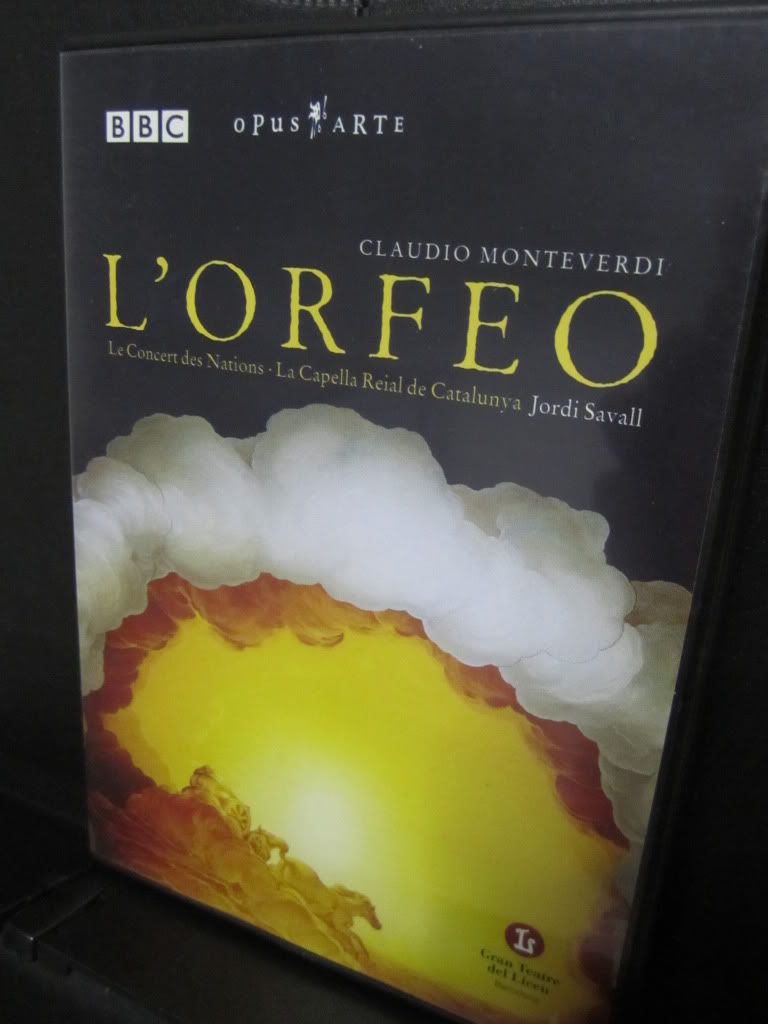Claudio Monteverdi "Missa in illo tempore : Crucifixus à 4"
Musikkhistoria
Claudio Giovanni Antonio Monteverdi (15 May 1567 (baptized) -- 29 November 1643) was an Italian composer, gambist, and singer.
Monteverdi's work, often regarded as revolutionary, marked the transition from the Renaissance style of music to that of the Baroque period. He developed two individual styles of composition: the heritage of Renaissance polyphony and the new basso continuo technique of the Baroque. Enjoying fame in his lifetime, he wrote one of the earliest operas, L'Orfeo, which is still regularly performed.
"Missa in illo tempore : Crucifixus à 4"
Performed : Bach Collegium Japan
Dir : Masaaki Suzuki
Image : stained glass window - detail of head of Christ, Scopwick Church, Lincolnshire, England
Claudio Monteverdi
Claudio Giovanni Antonio Monteverdi (Italian; 15 May 1567 (baptized) – 29 November 1643) was an Italian composer, gambist, singer and Roman Catholic priest.
Monteverdi's work, often regarded as revolutionary, marked the change from the Renaissance style of music to that of the Baroque period period. He developed two styles of composition – the heritage of Renaissance polyphony and the new basso continuo technique of the Baroque. Monteverdi wrote one of the earliest operas, L'Orfeo, a novel work that is the earliest surviving opera still regularly performed. He is widely recognized as an inventive composer who enjoyed considerable fame in his lifetime.
Claudio Monteverdi was born in 1567 in Cremona, Lombardy. His father was Baldassare Monteverdi, a doctor, apothecary and amateur surgeon. He was the oldest of five children. During his childhood, he was taught by Marc'Antonio Ingegneri, the maestro di cappella at the Cathedral of Cremona. The Maestro’s job was to conduct important worship services in accordance with the liturgy of the Catholic Church. Monteverdi learned about music as a member of the cathedral choir. He also studied at the University of Cremona.
His first music was written for publication, including some motets and sacred madrigals, in 1582 and 1583. His first five publications were: Sacrae cantiunculae, 1582 (a collection of miniature motets); Madrigali Spirituali, 1583 (a volume of which only the bass partbook is extant); Canzonette a tre voci, 1584 (a collection of three-voice canzonettes); and the five-part madrigals Book I, 1587, and Book II, 1590. He worked at the court of Vincenzo I of Gonzaga in Mantua as a vocalist and viol player, then as music director. In 1602, he was working as the court conductor and Vincenzo appointed him master of music on the death of Benedetto Pallavicino.
In 1599 Monteverdi married the court singer Claudia Cattaneo, who died in September 1607. They had two sons (Francesco and Massimilino) and a daughter (Leonora). Another daughter died shortly after birth. In 1610 he moved to Rome, arriving in secret, hoping to present his music to Pope Paul V. His Vespers were printed the same year, but his planned meeting with the Pope never took place.
 In 1612 Vincenzo died and was succeeded by his eldest son Francesco. Heavily in debt, due to the profligacy of his father, Francesco sacked Monteverdi and he spent a year in Mantua without any paid employment. His 1607 opera L'Orfeo was dedicated to Francesco. The title page of the opera bears the dedication "Al serenissimo signor D. Francesco Gonzaga, Prencipe di Mantoua, & di Monferato, &c."
In 1612 Vincenzo died and was succeeded by his eldest son Francesco. Heavily in debt, due to the profligacy of his father, Francesco sacked Monteverdi and he spent a year in Mantua without any paid employment. His 1607 opera L'Orfeo was dedicated to Francesco. The title page of the opera bears the dedication "Al serenissimo signor D. Francesco Gonzaga, Prencipe di Mantoua, & di Monferato, &c."By 1613, he had moved to San Marco in Venice where, as conductor, he quickly restored the musical standard of both the choir and the instrumentalists. The musical standard had declined due to the financial mismanagement of his predecessor, Giulio Cesare Martinengo. The managers of the basilica were relieved to have such a distinguished musician in charge, as the music had been declining since the death of Giovanni Croce in 1609.
In 1632, he became a priest. During the last years of his life, when he was often ill, he composed his two last masterpieces: Il ritorno d'Ulisse in patria (The Return of Ulysses, 1641), and the historic opera L'incoronazione di Poppea (The Coronation of Poppea, 1642), based on the life of the Roman emperor Nero. L'incoronazione especially is considered a culminating point of Monteverdi's work. It contains tragic, romantic, and comic scenes (a new development in opera), a more realistic portrayal of the characters, and warmer melodies than previously heard. It requires a smaller orchestra, and has a less prominent role for the choir. For a long period of time, Monteverdi's operas were merely regarded as a historical or musical interest. Since the 1960s, The Coronation of Poppea has re-entered the repertoire of major opera companies worldwide.
Monteverdi died, aged 76, in Venice on 29 November 1643 and was buried at the church of the Frari.
.


No comments:
Post a Comment